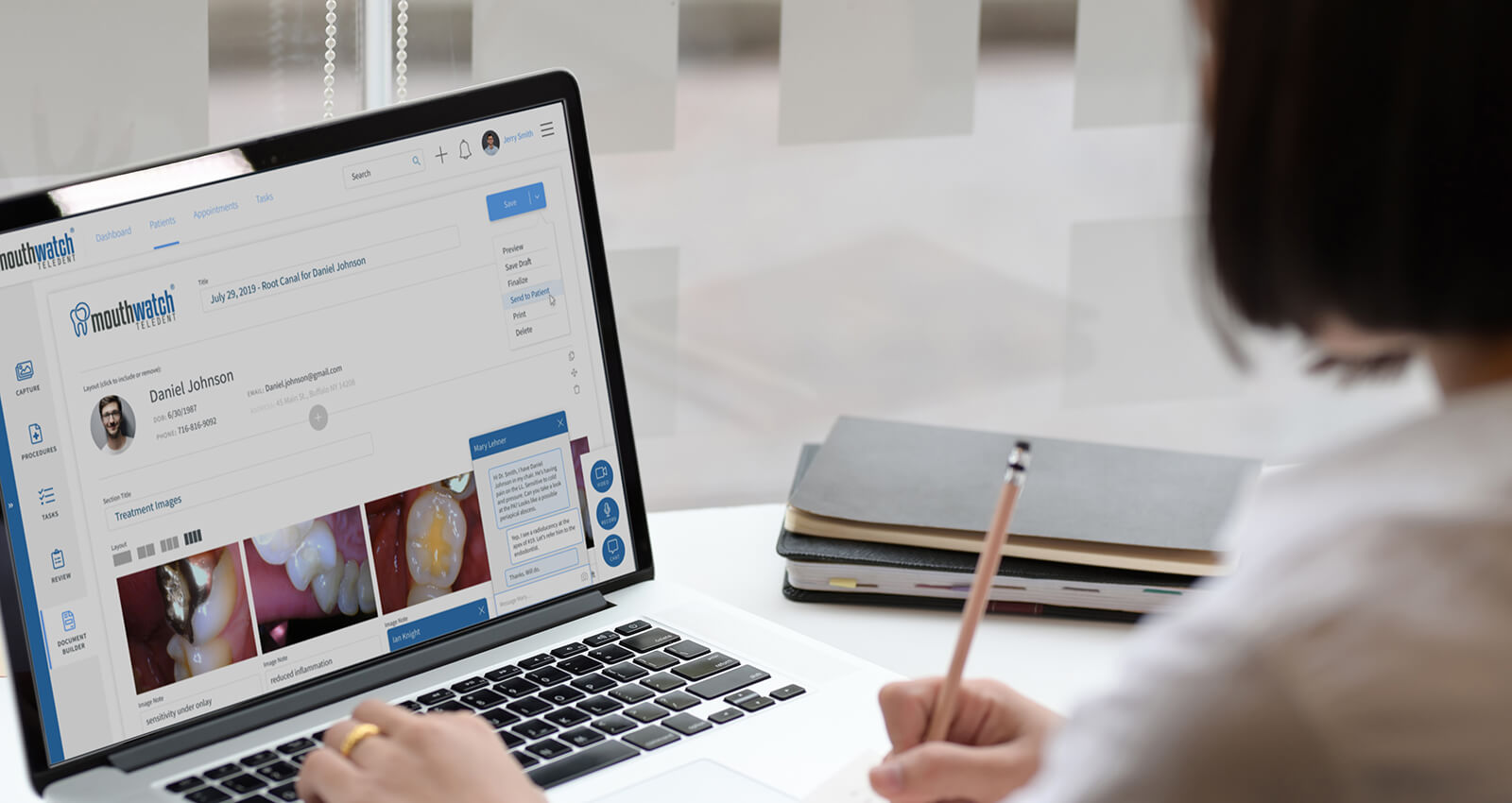
Due to the changes dental professionals are currently facing, and the increased use of teledentistry for patient at home encounters, we wanted to update this post with resources to help you with coding and billing of teledentistry encounters during COVID-19:
Resource updates for D9995 and D9996 teledentistry coding
MouthWatch resources on the blog
- Teledentistry example coding scenarios. Examples of D0170, D0171, D0140 and others used with D9995 and D9996.
- Slide deck on navigating billable teledentistry encounters [pdf download]
- Lookup codes: insurance payers reimbursing teledentistry encounters by code ‚- a table based on ADA updates on payer information so providers can lookup a specific exam code and see which providers cover the code.
Also see:
Mouthwatch Covid Updates and Resources Hub
ADA COVID-19 Coding and Billing Interim Guidance ‚- the ADA’s guidance on how to code an bill for teledentistry encounters, technology requirements, HIPAA requirements, sample informed consent, and policies by payers.
Coding for Teledentistry
If you are reading this, you probably already know at least a little about teledentistry. But let’s have a quick recap before jumping in to what the CDT codes are and how to use them.
Teledentistry is a means of delivering patient care and oral health education to people at a remote location or coordinating care providers in the service of patient care. With the development of teledentistry, patients are able to receive healthcare information, dental evaluations and diagnosis from a variety of providers, all through digital communication. This is bridging the gap between doctors and patients and providing the opportunity for more patients to seek dental care more conveniently.
The two modalities for teledentistry are synchronous and asynchronous. The synchronous approach is a real time, two-way interaction between a patient and a provider, or between providers themselves, usually accomplished through video. The asynchronous method typically is used to transfer patient data (radiographs, intraoral imaging, video, charting) to a dentist to provide patient evaluation and diagnosis remotely. Like synchronous modalities, it can also be used to connect providers collaboratively in the service of patient care, for instance by getting specialist clinical input, or collaboration between medical and dental providers.
The Two CDT Codes for Teledentistry
The two full Current Dental Terminology (CDT) Code entries are:
D9995 teledentistry‚- synchronous; real-time encounter. (Reported in addition to other procedures (e.g., diagnostic) delivered to the patient on the date of service.)
D9996 teledentistry‚- asynchronous; information stored and forwarded to dentist for subsequent review. (Reported in addition to other procedures (e.g., diagnostic) delivered to the patient on the date of service.)
Teledentistry itself is not a specific service but rather a method of delivering care. When discussing the CDT codes for teledentistry, it’s important to know these codes are used in conjunction with another code, typically an exam.
How to Use The Codes
Who should use this code?
Frequently when using teledentistry, there is more than one provider involved but it’s important to know which provider will submit the code. The dentist that performs the oral evaluation, makes a diagnosis and creates a treatment plan will be the provider that reports the teledentistry CDT code.
As an example, a hygienist may offer mobile preventative care while having a collaborative dentist who performs an oral evaluation remotely, while the hygienist performs a prophylaxis and fluoride treatment onsite. In this example the dentist would submit CDT codes D0120 and D9996 for their exam and to report that teledentistry was used in this exam. The hygienist would report CDT codes D1110 and D1206 to report the prophylaxis and fluoride treatment performed on site.
In some cases more than one claim submission may be used when state practice acts permit different licensed health care providers to submit claims for the particular services they provided during the teledentistry visit. As a default though, the dentist overseeing the teledentistry evaluation would be the appropriate provider to submit the teledentistry CDT codes. Be sure to check with your dental board on specific requirements for your state.
What Documentation is required?
A patient’s record must indicate when teledentistry is used and which modality (synchronous or asynchronous) was used. For submission to dental insurance, the teledentistry code should be listed under ‚”Record of Services Provided‚” along with all other services rendered on this date of service. In addition to adding the CDT code, you must also complete the ‚”Place of Service‚” portion (line 38 on an ADA claim form). The place of service code for telehealth is 02, which shows health services and health related services are provided or received, through telecommunication technology.
When are the teledentistry codes appropriate to use?
The teledentistry codes should be used anytime a dental evaluation is completed or oral health education is delivered using one of the teledentistry modalities. The synchronous teledentistry code (D9995) should be used when a live interaction occurs when the patient and provider communicate in real time. The asynchronous teledentistry code (D9996) should be used during a dental evaluation performed by a doctor when receiving patient data through a store and forward approach.
Summary
The teledentistry codes should be billed in addition to your procedure codes, whether it is image capture, evaluation, care coordination, or education. While it can be confusing on what services can be completed via teledentistry, please reference your state Practice Act for teledentistry regulations and allowances.
Billing and coding, when utilizing innovative teledentistry technology, opens the possibility for increased revenue potential and cost savings all at the same time. Creating a metric and proper documentation increases adoption and utilization by third party payors, opening the doors to innovative practice models, while growing and protecting your practice from fraud.
